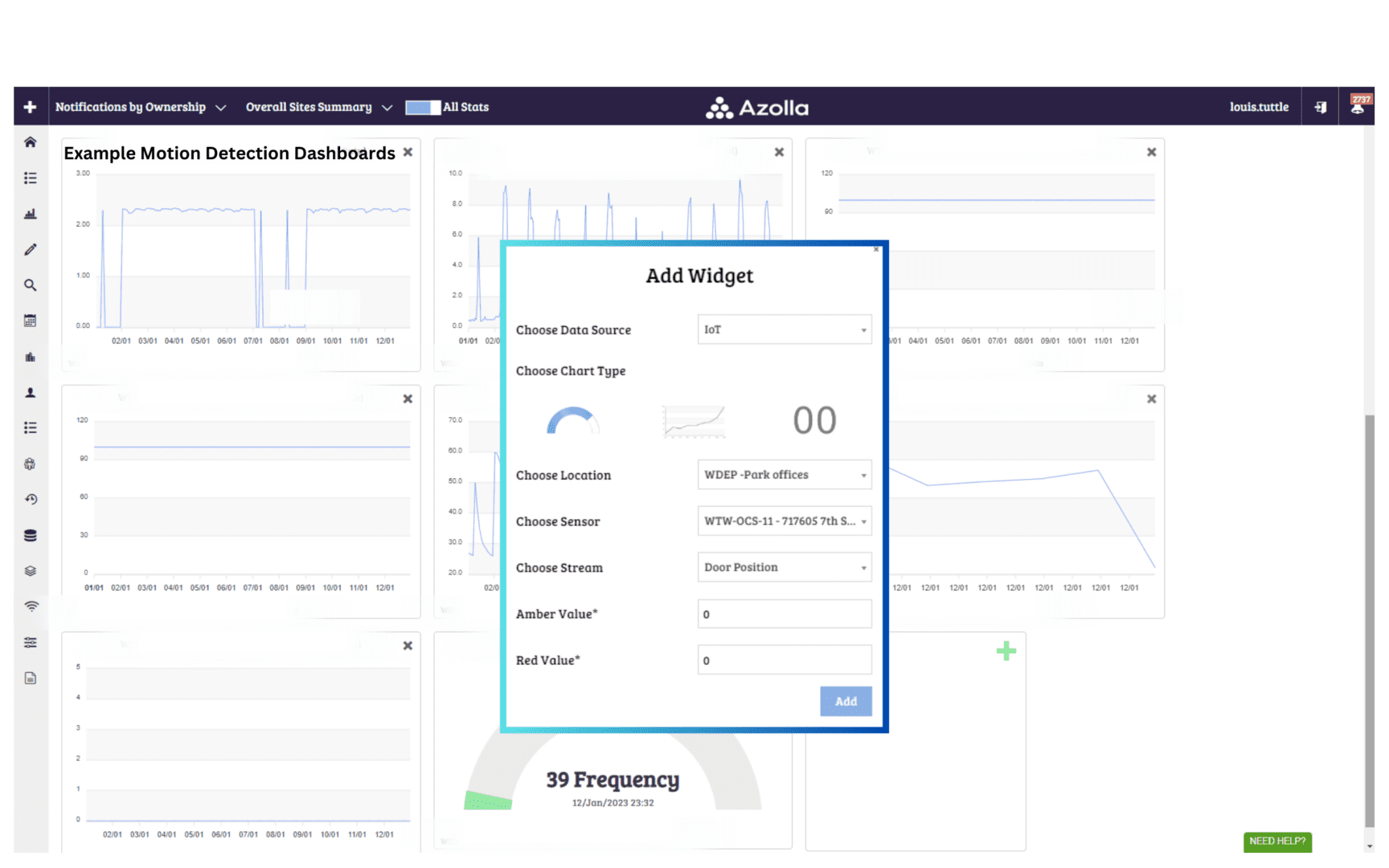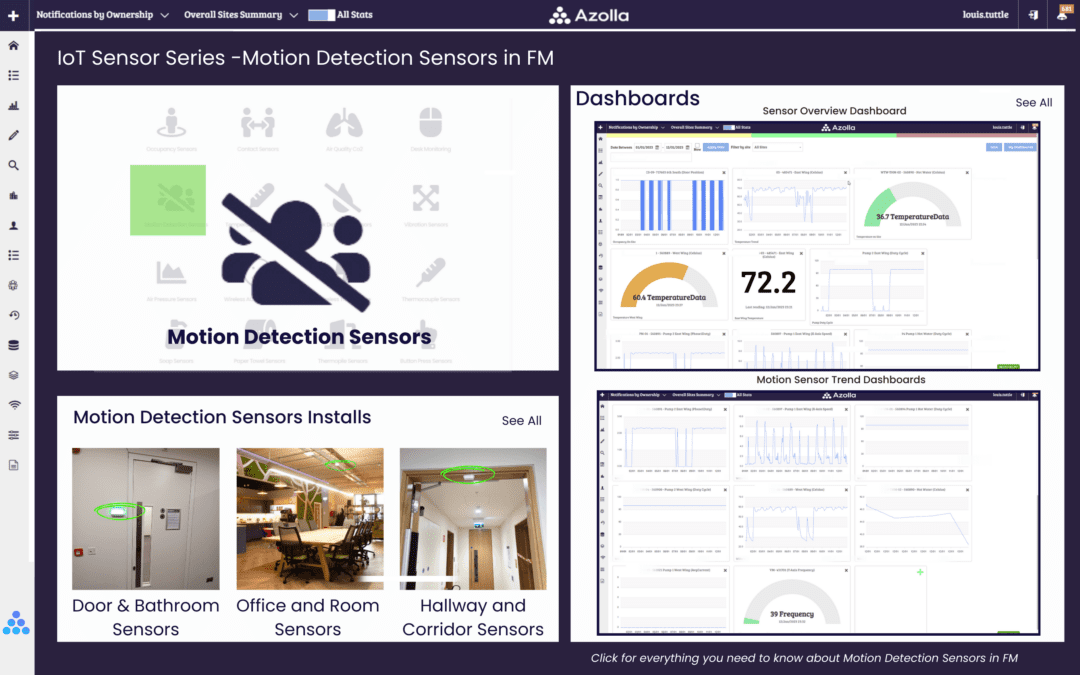Why Motion Detection Sensors Are Essential for Modern Facilities Management:
In the evolving landscape of facilities management, the need for robust security measures and efficient operations is more critical than ever. As a Facilities or Operations Manager, your goal is to maintain a secure environment while optimising the use of space and resources. Motion detection sensors offer a powerful solution to these challenges, providing real-time data on movement within your facility and enabling proactive management of both security and operational efficiency.
This blog post explores how motion detection sensors can transform your approach to facility management, where to install them for maximum impact, and the numerous benefits they offer.
How Motion Detection Sensors Work:
Motion detection sensors are devices that detect and respond to physical movement within a designated area. When motion is detected, these sensors trigger an alert or activate specific systems such as lighting, HVAC, or security alarms. By strategically placing these sensors throughout your facility, you can gain valuable insights into how spaces are being used and ensure that your security measures are always one step ahead.
Strategic Locations for Motion Detection Sensors:
To maximise the effectiveness of motion detection sensors, consider deploying them in the following key areas:
- Building Entrances and Exits: Monitor access points to ensure only authorised personnel enter, especially during off-hours.
- Restricted Areas: Protect sensitive zones such as data centres, storage rooms, or labs by detecting unauthorised access.
- Corridors and Hallways: Track movement to optimise lighting and HVAC based on real-time usage, enhancing energy efficiency.
- Parking Lots and Garages: Increase safety by detecting movement in parking areas, deterring unauthorised access and potential criminal activity.
- Unoccupied or Low-Traffic Areas: Monitor infrequently used spaces to prevent unauthorised access and ensure safety protocols are followed.
- Perimeter Fencing: Detect and respond to movement along the facility’s perimeter to prevent potential intrusions.
- Common Areas: Manage shared spaces more effectively by understanding peak usage times and adjusting resources accordingly.
- Emergency Exits: Ensure emergency exits are only used for their intended purpose, improving overall safety and compliance.
The Benefits of Motion Detection Sensors in Facility Management:
- Enhanced Security: Motion detection sensors provide a crucial layer of security by monitoring movement in sensitive and high-risk areas. They can alert security personnel in real-time to any unauthorised activity, allowing for immediate response and reducing the risk of theft, vandalism, or unauthorised access.
- Optimised Space Utilisation: These sensors offer valuable data on how different areas of your facility are used. By analysing this data, you can make informed decisions about space allocation, adjust cleaning and maintenance schedules, and optimise lighting and HVAC systems, leading to better resource management.
- Energy Savings: Motion detection sensors contribute to significant energy savings by automating lighting and HVAC systems based on actual occupancy. For instance, lights and air conditioning can be automatically turned off in unoccupied areas, reducing energy consumption and lowering operational costs.
- Improved Incident Response: With real-time alerts, your security team can respond more quickly to potential threats. Whether it’s after-hours activity or unauthorised access to restricted areas, these sensors ensure that any suspicious movement is detected and dealt with promptly.
- Increased Occupant Safety: By monitoring movement in key areas, motion detection sensors help maintain a safe environment for occupants. In the event of an emergency, these sensors can aid in managing evacuation processes by providing real-time data on movement patterns.
The Risks of Not Using Motion Detection Sensors:
- Elevated Security Risks: Without motion detection, unauthorised access or suspicious activity may go undetected, increasing the risk of security incidents.
- Wasted Resources: Inefficient space utilisation and energy consumption due to lack of monitoring can lead to unnecessary costs.
- Delayed Incident Response: Without real-time alerts, security teams may not be able to respond quickly to potential threats, increasing the risk of damage or loss.
- Compromised Occupant Safety: In the absence of monitoring, emergency situations may not be effectively managed, putting occupants at risk.
Ease of Installation and Integration:
Motion detection sensors are designed for easy installation and can be seamlessly integrated with your existing Building Management System (BMS) or security infrastructure. These sensors are often wireless, offering flexibility in placement without the need for extensive cabling. Once installed, they provide continuous monitoring and can be managed through centralised dashboards, offering a clear and real-time view of activity within your facility.
Future-Proofing Your Facility with Motion Detection Sensors:
Investing in motion detection sensors is a forward-thinking strategy that enhances both the security and efficiency of your facility. These sensors not only help you monitor and respond to potential security threats in real time but also offer valuable insights into space utilisation, allowing you to optimise your operations for maximum efficiency and cost savings.
Want to know more?
Ready to elevate your facility’s security and operational efficiency with motion detection sensors?
Want to explore costs or speak with current customers using this technology? Contact us today to learn more!
Get in touch below if you would like to find out more about IoT for your organisation or client sites.


